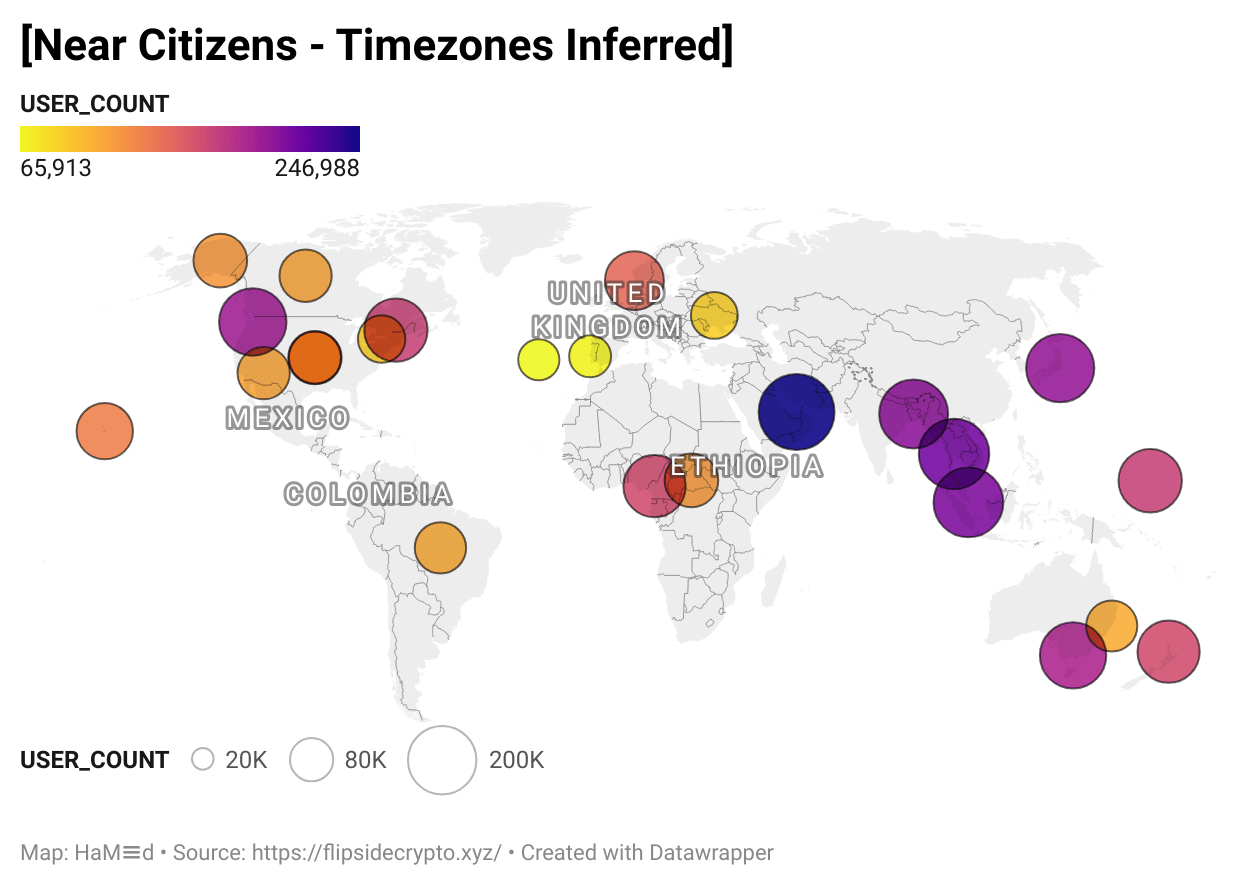NEAR || User Retention
In this dashboard, we explore the user profile and retention cohort of the Near ecosystem. We have attempted to provide an overview of new users and evaluate their engagement across the ecosystem by counting how many times they return to the network.
Explanation of cohort1_Retention_Rate
The cohort1_Retention_Rate is a crucial metric that provides insights into the retention behavior of a specific group of users, referred to as "cohort1." This cohort consists of users who made their first trade on the platform during the initial week of observation.
Definition:
Cohort1: Users who initiated their first trade within the first week of the observed period. Calculation:
The cohort1_Retention_Rate is calculated as the ratio of the count of users who continued to trade in subsequent weeks to the total count of users in cohort1. Interpretation:
A high cohort1_Retention_Rate indicates that a significant proportion of users who started trading in the first week continued to engage with the platform in the following weeks. A declining cohort1_Retention_Rate over time might suggest challenges in retaining users acquired in the initial period.
Why It Matters:
User Engagement: High retention rates signify sustained user engagement, a positive indicator for the platform's appeal and usability.
User Loyalty: Retained users from the initial cohort contribute to the platform's long-term user base, potentially becoming loyal customers. Implications:
Success Metrics: Monitoring cohort retention rates is crucial for evaluating the success of user acquisition strategies and the platform's ability to retain new users over time. Identifying Trends: Changes in the cohort1_Retention_Rate trends can prompt further investigation into factors affecting user retention, guiding strategic decisions for improving user experience and engagement.
Recommendations:
Regularly monitor cohort1_Retention_Rate trends to identify patterns and make informed decisions to enhance user retention strategies. Investigate and address potential factors influencing a decline in retention rates, such as user onboarding, platform features, or market dynamics.
Conclusion:
The cohort1_Retention_Rate is a key performance indicator that provides valuable insights into the platform's ability to retain users acquired in the early stages. Understanding and addressing the factors influencing this metric can contribute to sustained growth and success.
Sojourner or Habitant
To gain meaningful insights into user retention across NEAR ecosystem, we first filtered out wallets with over 10,000 transactions to eliminate bots and contracts. This distinction allowed us to focus on genuine user activity.
- Sojourners Dominate the Landscape
Upon analyzing the cumulative count of new wallets based on their active duration, a distinctive trend emerges. The chart reveals a substantial drop in new users from those online for a day to those online for 14 or more days (18m → 770k). This indicates that a significant portion of users could be characterized as "sojourners," engaging with the platform briefly before moving on.
- Short-Term Engagement: Majority Exit Within 14 Days
Zooming in on users active for more than 50 days, we notice a stark decline to around 770k. This emphasizes that a considerable number of users tend to be short-term participants, leaving the ecosystem after 14 days of initial engagement. The distinction between sojourners and habitants becomes clearer as the active duration increases.
Identifying New Active Users
In the subsequent analysis, we specifically targeted new users—those transacting on NEAR for the first time. To be considered 'new active users,' individuals had to have an active duration of at least 7 days and a last active duration of 7 days or less.
- Declining Trend in New Active Users
The charts illustrate a concerning trend in the count of new active users over time. Out of 36m individuals, only 2.7m qualify as new active users. This suggests a diminishing interest or acquisition of new users on the network, emphasizing the need for strategies to enhance user onboarding and engagement.

Note that the user count here is low as we are looking at users that have made transactions in >20 unique hours, which is necessary for this analysis.
NEAR citizen seems to come from Central Asia to Southeast Asia Region.
We see users clustering around the +2 UTC to +12 UTC region. This suggests that most of the users were from Mid-Atlantic (? which is odd) and South/Central Asia region.
Map link